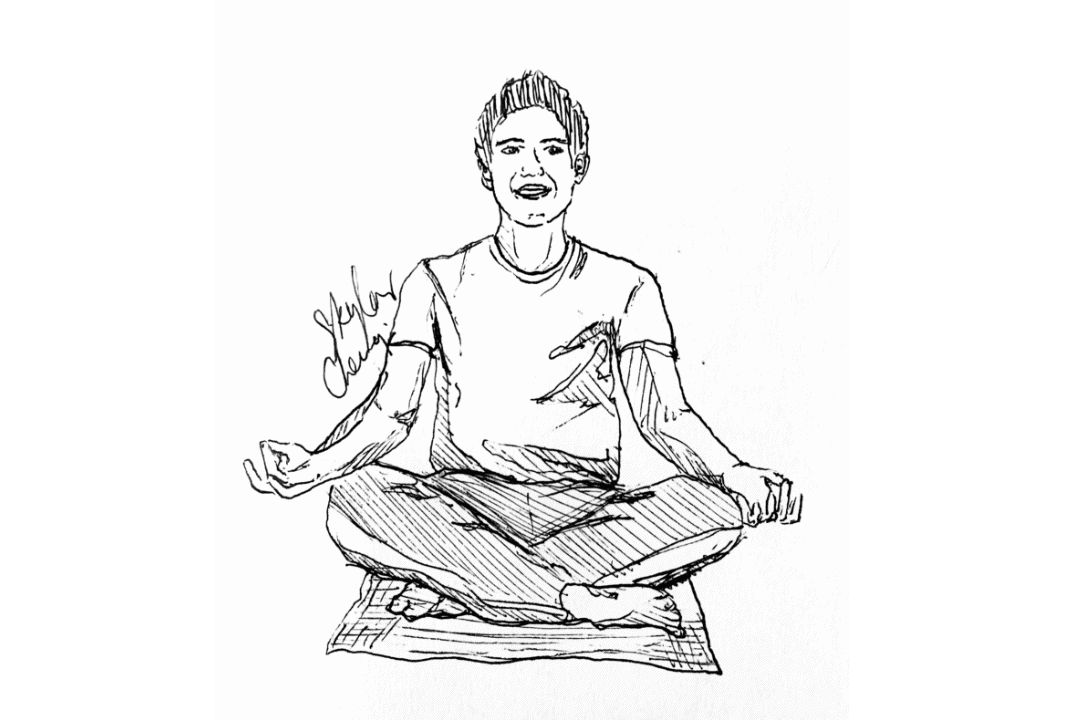We begin in shavasana, or corpse pose. It looks just like it sounds: we lie face-up with our eyes closed and our palms facing upward. “Try to relax the whole body and concentrate on breathing,” said our teacher. He circulated the room between the turquoise mats that blanketed the ground. We all went silent, clearing our busy thoughts and focusing inward.
“Relax your toes. Relax your knees. Relax your calves. Relax your hamstrings,” chanted our teacher as he guided our awareness from the tips of our toes to the crown of our heads. As our breathing slowed and our limbs relaxed, the tension in our bodies dissolved.
Yoga is a practice that combines physical poses with focused breathing, meditation, mindfulness, and spirituality, that originated in ancient India. Although Western practitioners often consider it purely a form of exercise, yoga has the potential to influence the way we think and feel in our bodies, according to a recent paper authored by Dr. Niva Piran, a professor at U of T’s Department of Applied Psychology and Human Development, and Dr. Dianne Neumark-Sztainer, a professor at the University of Minnesota’s School of Public Health.
Their research suggests that yoga can enhance our body esteem and “experience of embodiment” — our lived experience in our bodies as we engage with the world.
This new research, published in Eating Disorders: The Journal of Treatment & Prevention, is grounded in the idea that cultural and social pressures discipline our bodies and shape the way we live in them. Western cultures place a huge emphasis on external appearances; that pressure can lead to disconnection from our bodies, reluctance to express our bodily needs and desires, discomfort in taking up physical space, lack of self-confidence, body shame, and self-neglect.
Piran and Neumark-Sztainer turn to yoga as one possible solution.
According to their research, yoga can promote positive embodiment and counter cultural norms that place excessive importance on appearance. For Piran, one important element of yoga is countering stereotypes, as it can challenge the idea of women not being strong, powerful, or assertive.
She suggests that empowering poses, such as warrior I and warrior II, allow yoga practitioners to connect with experiences of strength and power. Piran also pointed out the need for “de-emphasizing what positions look like and focusing more on the internal experience of poses.”
Yoga is a physical activity that requires focusing on body sensations and on breathing; this helps shift our attention inward and away from the appearance of our bodies.
For the researchers, yoga is also about creating a safe space for bodies of all kinds, such as those of diverse sizes, ethnicities, races, sexual orientations, gender identities, and physical abilities. Yoga teachers can facilitate such safe spaces by bringing our attention to how poses feel, making us more attuned to our bodies, and suggesting modifications to poses to accommodate people of various abilities and comfort levels.
In addition, the researchers highlighted the importance of practicing yoga in diverse communities. Within Western cultures that idolize certain body types, practicing yoga in diverse communities can promote equity, support
body acceptance, and nurture a sense of belonging for all practitioners.
But not all yoga classes are free from our culture’s emphasis on external appearance and performance. Piran cites the research of Dr. Jennifer Webb, a professor at the Department of Psychological Science at the University of North Carolina at Charlotte, who noticed that models on the covers of yoga magazines have been getting slimmer and slimmer over the past few decades.
“Just because people do yoga does not necessarily mean that that yoga will contribute to a positive experience of living in the body,” said Piran. “Pressures around appearance that exist everywhere else can also be part of the yoga culture.”
She encouraged finding “the type of yoga that protects practitioners from larger cultural pressures.”
Indeed, the researchers emphasized the importance of finding a yoga class that fosters equity, as well as the responsibility of yoga teachers to facilitate safe conditions that promote positive embodiment.
Piran and Neumark-Sztainer hope that their research, which includes recommendations for teacher-related practices, can guide yoga teachers in promoting positive body connection in their classes.
After practicing surya namaskar, also known as sun salutations; balancing in vriksasana, the tree pose; and stretching in balasana, the child’s pose; the yoga class ends the same way it starts: in shavasana. We lay on our backs, somehow feeling in equal parts relaxed and energized. We sat up, cross legged, as our teacher left us with a closing reflection.
I will leave you with something Piran said to me during her interview that is easier said than done, but still worth mentioning in all its brevity. “Accept your body and be in social contexts that support that kind of acceptance. Allow yourself to be strong, have a voice, and be assertive.”
She then added, with kindness in her voice, “Our bodies should not be a source of personal shame.”


